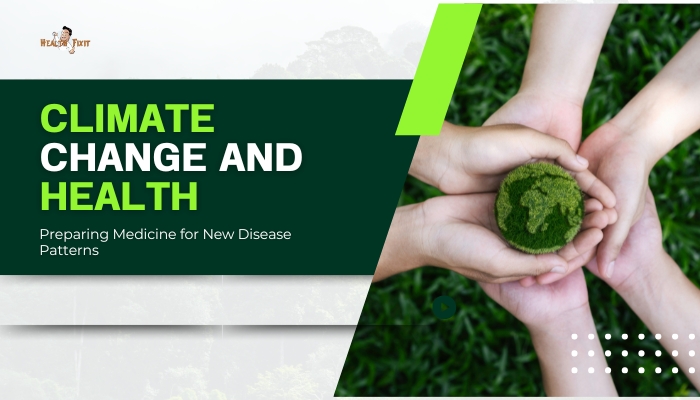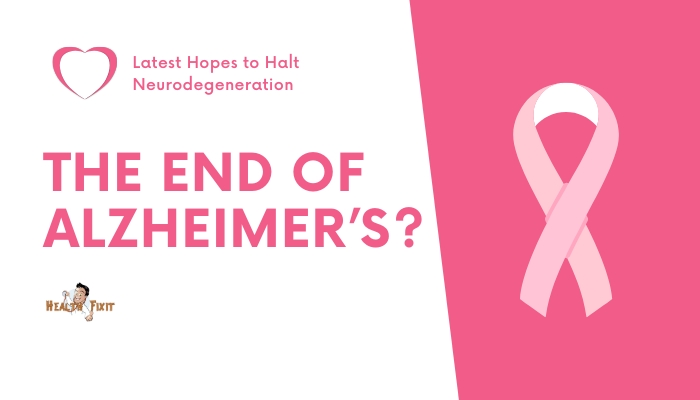Introduction
Global warming is more than a problem for polar ice caps or coastal cities; it also profoundly impacts human health. Changing climate factors—from heat waves and floods to shifting insect habitats—drive the spread of infectious diseases
aggravate respiratory conditions, and strain healthcare systems worldwide. Consequently, physicians, public health officials, and policymakers face new challenges as they prepare for emerging disease patterns linked to climate change
. This article examines how rising temperatures and environmental transformations create novel health risks, and how medicine can adapt to safeguard populations in an evolving climate landscape.
How Climate Change Alters Disease Ecology
Expanding Vector-Borne Diseases
Warmer temperatures let disease-carrying insects like mosquitoes and ticks expand their ranges, colonizing previously cooler regions. Some patterns include:
- Malaria and Dengue: Once confined to tropical zones, they may appear in higher altitudes or latitudes.
- Tick-Borne Illnesses: Lyme disease risk can surge in areas newly hospitable to ticks.
Waterborne Illnesses
Heavy rainfall or coastal flooding, exacerbated by sea-level rise, can contaminate water sources. Pathogens like Vibrio flourish in warmer waters, and flooding events foster cholera or enteric fevers where sanitation is poor.
Respiratory and Allergic Issues
Longer pollen seasons and elevated pollution levels worsen allergies and asthma. Heat waves enhance ozone formation, aggravating respiratory disorders. Meanwhile, wildfires can release harmful particulates, compounding lung health problems.
Health System Implications
Infrastructure Strain
More frequent disasters—storms, floods, wildfires—overwhelm clinics and hospitals. Power outages jeopardize critical medical equipment, vaccine storage, and supply chains, challenging emergency response readiness.
Changing Patient Demographics
Elderly, children, or those with chronic conditions like COPD are especially vulnerable to heat stress or poor air quality. Health systems must anticipate heightened demand for specialized care,
from dialysis centers (coping with water issues) to mental health services (due to climate-related trauma).
Migratory and Conflict-Driven Crises
Climate-driven displacement can expand refugee populations, carrying communicable diseases across borders. Overcrowded camps or resource scarcity fosters outbreaks—making integrated global health monitoring essential.
Medical Adaptation Strategies
Early Warning Systems
Public health agencies deploy surveillance tools—monitoring disease vectors (mosquito populations, tick maps) or environmental indicators (rainfall patterns, temperature anomalies). Such real-time data can forecast outbreaks, allowing targeted interventions.
Strengthening Health Infrastructure
Climate-resilient facilities feature robust backup power, flood defenses, or heat-reducing designs. Telemedicine networks or mobile clinics reach remote or disaster-struck communities. Training staff in emergency protocols ensures rapid mobilization when crises strike.
Vaccines and Treatments
As diseases like dengue or West Nile spread, developing or refining vaccines becomes urgent. Pharma companies and researchers work on multi-strain products for rapidly shifting pathogens. At the same time, governments stockpile essential medications and diagnostic kits.
Community Engagement
Grassroots education can reduce stagnant water (breeding mosquito habitats), improve hygiene post-flood, and encourage safer cooking methods (reducing indoor air pollution). Empowered communities are better equipped to adopt preventive measures.
Policy and Interdisciplinary Collaboration
One Health Approach
The One Health model underscores that human, animal, and environmental health are intertwined. Coordinated efforts between veterinarians, ecologists, and physicians can track emerging zoonotic diseases before they leap to humans.
International Cooperation
Pathogens ignore borders. Collaboration across national public health bodies, meteorological agencies, and organizations like the WHO is indispensable. Data sharing and aligned interventions enable a unified front against climate-exacerbated epidemics.
Climate Mitigation and Adaptation
Reducing carbon emissions and preserving ecosystems remains fundamental. Proactive mitigation efforts slow the pace of climatic shifts, easing health burdens. Meanwhile, adaptation policies—like improved urban planning—lessen the immediate toll on vulnerable populations.
Practical Tips for Healthcare Providers
- Monitor Local Trends: Keep updated on shifting disease patterns and vector presence in your area.
- Educate Patients: Provide guidance on heatwave precautions, water safety, and mosquito/tick avoidance.
- Support Green Policies: Advocate within healthcare systems for sustainable practices—energy efficiency, waste reduction—that help mitigate climate change.
- Stay Informed: Expand your knowledge of climate-driven diseases, attending conferences or CME programs on emerging infections.
Conclusion
Climate change is reshaping the global disease landscape, creating both immediate and long-term repercussions for healthcare.
Whether confronting novel outbreaks of vector-borne diseases or coping with surging chronic illness rates, medical professionals and policymakers must adapt swiftly.
Proactive surveillance, robust health infrastructure, and cross-sector collaboration form the backbone of any effective response
. By recognizing the interplay among environment, disease vectors, and human communities, we can refine preparedness strategies—protecting populations worldwide in this era of climate volatility.
References
- Watts N, Amann M, Arnell N, et al. The 2021 report of the Lancet Countdown on health and climate change: code red for a healthy future. Lancet. 2021;398(10311):1619–1662.
- Ebi KL, Ogden NH, Semenza JC, Woodward A. Detecting and attributing health burdens to climate change. Environ Health Perspect. 2017;125(8):085004.
- Patz JA, Frumkin H, Holloway T, Vimont DJ, Haines A. Climate change: challenges and opportunities for global health. JAMA. 2014;312(15):1565–1580.
- WHO. COP24 Special Report: Health & Climate Change. Geneva: World Health Organization; 2018.
- IPCC. Climate Change 2022: Impacts, Adaptation and Vulnerability. Cambridge University Press; 2022.
- Friel S, Bowen K, Campbell-Lendrum D, et al. Climate change, food systems and population health risks in their interactions. Int J Environ Res Public Health. 2020;17(23):8833.
- Morand S, Lajaunie C. Emerging diseases, livestock expansion and biodiversity loss. Biol Conserv. 2021;261:109241.
- Polain de Waroux O, et al. Identifying risk factors for outbreaks in the context of climate variability and change. PLoS One. 2018;13(6):e0199079.
- Yates D, Arndt C, Dracup JA. Climate and health: synergy of climate science and public health. Curr Opin Environ Sustain. 2018;33:2–7.
- Hess JJ, Boodram B, Calkins C, et al. Integrating climate change adaptation into public health practice: using adaptive management to increase adaptive capacity and build resilience. Environ Health Perspect. 2012;120(2):171–179.





